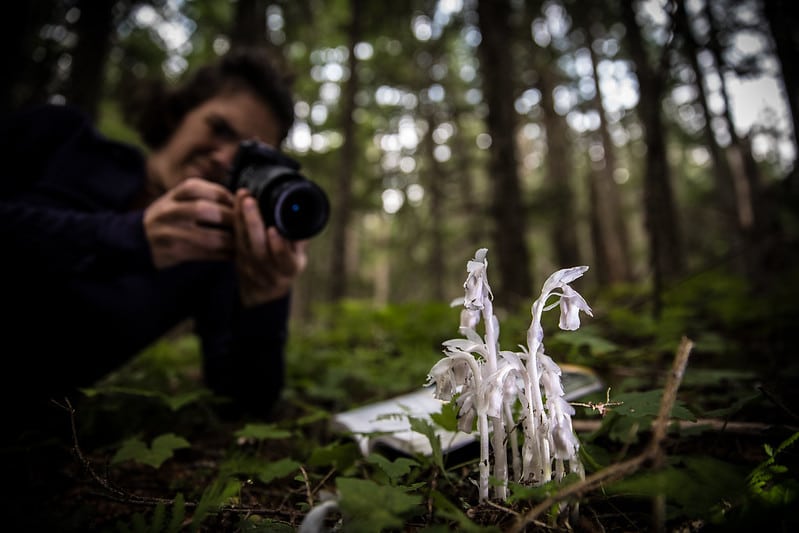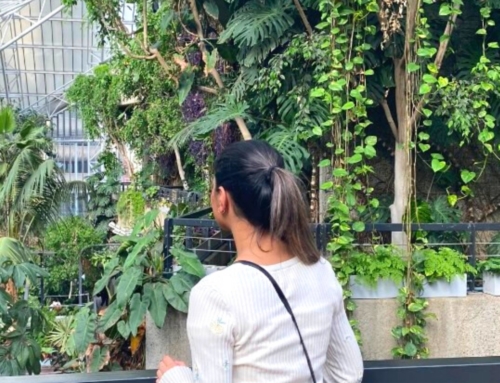Enzymes from hot springs, toxins from frogs, and the many, many medicinal uses of plants. Following our piece on zoonotic diseases, we explore how evolution has been a source of medical innovation.
Did you know that a crucial ingredient in the test to diagnose COVID-19 was discovered in a freshwater hot spring?
Actually, it’s even more significant than that. This compound (a type of enzyme named DNA polymerase) has also been used to test other emerging diseases like AIDS and SARS, and is the key ingredient in a technique which underlies modern genetics: the polymerase chain reaction (PCR).
The PCR was developed in the mid-1980s using a DNA polymerase developed from bacteria Thermus aquaticus (named Taq DNA polymerase from T. aquaticus) found in a hot spring in Yellowstone National Park. Since then, biotechnology companies have produced a similar enzyme for PCR from bacteria living in deep-sea hydrothermal vents (Pfu DNA polymerase). These DNA polymerase enzymes have enabled medical scientists to take a small sample of virus DNA (for example, in a patient’s blood sample) and multiply it until it is big enough to detect and confirm a diagnosis. The PCR process requires a series of drastic temperature changes, and what made the discovery of Taq DNA polymerase so important was its ability to function despite the fluctuations to extreme temperatures – due to the extreme environments in which these bacteria had evolved.
Nature’s trial and error
The process of evolution – trial and error over millions of generations – means that all lifeforms which we share our planet with today have scraped their survival through long trials of adapting and readapting to their environments. The innovation that we find in the natural world is the basis of our study of chemistry and biology- without it, we lose a few billion years’ head-start.
Even though most of the innovations which inform medicine are chemicals like Taq DNA polymerase, it’s not just microscopic life like the bacteria Thermus aquaticus which has led to medicinal breakthroughs. Sometimes vertebrates can create extraordinary chemical innovations by becoming locked in an arms race… which is as exciting as it sounds.
An evolutionary arms race

A male Red-bellied newt (Taricha rivularis) in northern California. Newts in the Taricha genus (Pacific newts) possess the biotoxin tetrodotoxin and can be lethal to humans if consumed. Image: Seánín Óg
Pacific newts (from the genus Taricha which comprises four species of rough-skinned newt) can be found from southern Alaska to southern California. With their soft skin, slow gait and small size, these newts are perfect snacks for aquatic garter snakes. Like many amphibians, the Pacific newts have developed a toxin called tetrodotoxin, or TTX, in their skin and brightly coloured bellies which they expose when threatened to warn off predators. Most predators, like birds, are wary of bright colours and will not attempt to capture colourful prey… but in the case of Pacific newts, garter snakes evolved their own antidotes against tetrodotoxin, resulting in a coevolutionary arms race where the newts with the most toxicity in their skin survived to reproduce, but so did the garter snakes with the highest tetrodotoxin resistance. The result is that Taricha newts are extremely toxic – far more toxic than they ‘need’ to be, if it hadn’t been for their evolutionary enemy, the garter snake.
Numerous arms races like these have resulted in the evolution of an innovative range of toxins and chemicals evolving across the animal kingdom. As well as Pacific newts, tetradotoxins can be found in many other poisonous species such as pufferfish, blue-ringed octopuses, moon snails and many other amphibians.
But how does the evolution of potent toxins benefit medical science? Well, tetradotoxin is a blocker, and can prevent the nervous system from carrying messages such as pain from our body to our brain, as well as responses (like flinching) to such messages. This has been investigated as a method of pain relief for cancer, migraines and headaches associated with heroin withdrawal. For pop culture fans, tetrodotoxin is also a very popular plot device used in action storylines to fake death, such as Captain America: The Winter Soldier, Jane the Virgin, and Miami Vice. Although Shakespeare doesn’t mention it, it could have been used to fake Juliet’s death in Romeo and Juliet, too.
Tetradotoxins embody the quality of the natural world to be both good or bad for humans, depending on our relationship with it. On one side, they are deadly nerve poisons which collect in the skin of brightly coloured amphibians. On the other, with more understanding they could provide breakthroughs for modern medicine. Another toxin found in amphibian skin is epibatidine, which could lead to the development of a painkiller 200 times more potent than morphine and without the addictiveness.
Biodiversity and medicine
The natural world has been humanity’s medicine cabinet for millennia. Artemisinin, a drug that is nearly 100 percent effective against malaria, is extracted from sweet wormwood, a Chinese herb which has been used to treat fevers in Chinese traditional medicine for more than 2,000 years.
It’s not just humans who self-medicate using their environments. Many animals use their environments as a pharmacy as well, including birds, bees, lizards, elephants and chimpanzees. A dog will eat grass when it has an upset stomach. Macaws eat clay to aid digestion. Female woolly spider monkeys control their fertility with plant consumption. Pregnant elephants eat Boraginaceae leaves to induce labour. Self-medication is particularly common in primates – bonobos have been observed folding up leaves and stems of the shrub Manniophyton fulvum and swallowing them whole during parasite season. The folding is thought to slow down the decomposition of the leaves so they can act on parasites further down in the intestines.
Considering the ancient roots of traditional medicine, and self-medicating behaviour in our closest wild relatives, it is safe to assume that humans have a long history using the natural world to treat our ailments. According to the World Health Organisation, traditional medicine continues to play a vital role in healthcare, particularly in Africa and Southeast Asia.

From the approximate 60,000 plant species being used for medicine, about 15,000 are threatened with extinction from overharvesting and habitat destruction. Image © Shutterstock
Medicinal plants
Modern medicine is not separate from the natural world, either. Having advanced rapidly in the past 200 years, arguably one of the first major breakthroughs was when an active ingredient of a medicinal plant was extracted for the first time in the early 1800s: morphine. Despite its side effects (including decreased respiratory effort, low blood pressure and addiction – which is why alternatives like synthetic epibatidine are being developed), this ingredient from an opium poppy is still used widely to treat severe pain.
Since the isolation of morphine, many more active ingredients have been isolated from their source organisms to be studied, tested and used in medicine, for example:
- Quinine, used in anti-malarials, was first isolated from the bark of a South American Cinchona tree.
- Ephedrine, used for asthma, narcolepsy, to prevent low blood pressure during spinal anaesthesia and a common ingredient in Chinese traditional medicine, comes from Ephedra plants.
- Omacetaxine mepesuccinate (formerly known as homoharringtonine), used to treat leukaemia, comes from a small tree called the Chinese plum-yew.
These are just the tip of the iceberg. There are around 60,000 flowering plant species used for medicinal purposes worldwide, of which almost half have well-documented use. In addition, fungi are an important source of antibiotics such as streptomycin, neomycin, and erythromycin.
Unsustainable use
So biodiversity provides an important source of medicine, both directly through traditional medicine, and indirectly through modern medicine. But what about the other way around? How does this relationship affect biodiversity?
From the approximate 60,000 plant species being used for medicine, about 15,000 are threatened with extinction from overharvesting and habitat destruction and 20% of their wild resources have already been nearly exhausted with the increasing human population and plant consumption. It’s one thing to promote the medicinal uses of biodiversity as a justification for conservation, but that argument is not going to last forever if harvest continues to be unsustainable.

The Pacific yews of old growth forests was cleared indiscriminately for being thought to have ‘no commercial value’ before it was discovered that they contained a compound which could be used to treat ovarian cancer. Image: GlacierNPS
Habitat loss, and therefore biodiversity loss, is also moving faster than our understanding of our environment. By placing commercial value above natural or scientific value, we risk losing species before we understand the potential of what we have lost. For example, the logging of old growth forests in the Pacific northwest of the United States in the 90’s readily dismissed the ‘commercially useless’ Pacific yew as a ‘trash tree’ before it was discovered to hold taxol, a chemical which can induce remission in advanced ovarian cancer.
Another important issue is the misuse of wildlife, especially endangered wildlife, which the COVID-19 pandemic has brought to global media attention. Although many aspects of traditional medicine (particularly plant use) are evidence-based and some have informed the isolation of active ingredients used in modern medicine, there are also many uses which are not well-studied and where there are no restrictions on quality, safety and efficacy of ingredients, or the unsustainability of drawing specimens (particularly endangered species) from the wild.
Our relationship with biodiversity

As the dangers of wildlife consumption come to the fore with the COVID-19 outbreak, we need to think about how we can re-evaluate this important relationship between our health and biodiversity, as the fate of one is so clearly interlinked with the other. Image: GlacierNPS
Our relationship with biodiversity as a source of medicine can be traced back at least 60,000 years by fossil records. Both traditional and modern medicine relies on biodiversity as a source of medication and medical innovation – and biodiversity loss represents a significant threat to both. In addition, the relationship between the health of humans and ecosystems is far more complex and tightly woven than just medicine. Ecosystems provide life support for humans (and all other forms of life) through food, water, clean air, shelter and climate, and when any of these systems (such as freshwater sources or food production) break down, they also impact human health.
As the dangers of wildlife consumption come to the fore with the COVID-19 outbreak, we need to think about how we can re-evaluate this important relationship between our health and biodiversity, as the fate of one is so clearly interlinked with the other. Maybe, if we get it right, we can repair this relationship, and the health of our planet’s ecosystem (including humans) can be restored.
While we were working on these two pieces on Health and Biodiversity, the team at Synchronicity Earth have been discussing wider topics around conservation and our relationship with nature.
We are planning a series of virtual Deeper Thinking sessions in the near future to dive deeper and answer questions on some of these topics – we’d love you to take part. If you are interested and do not already receive our news, please subscribe here and we’ll let you know when sessions are and how to get involved.





